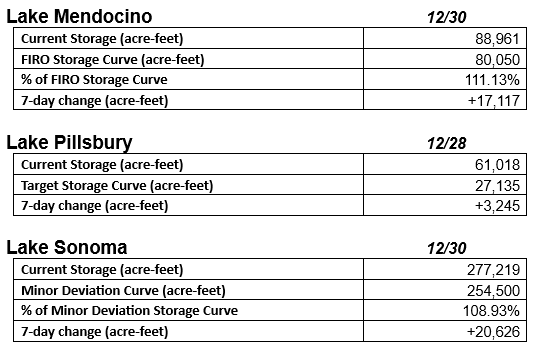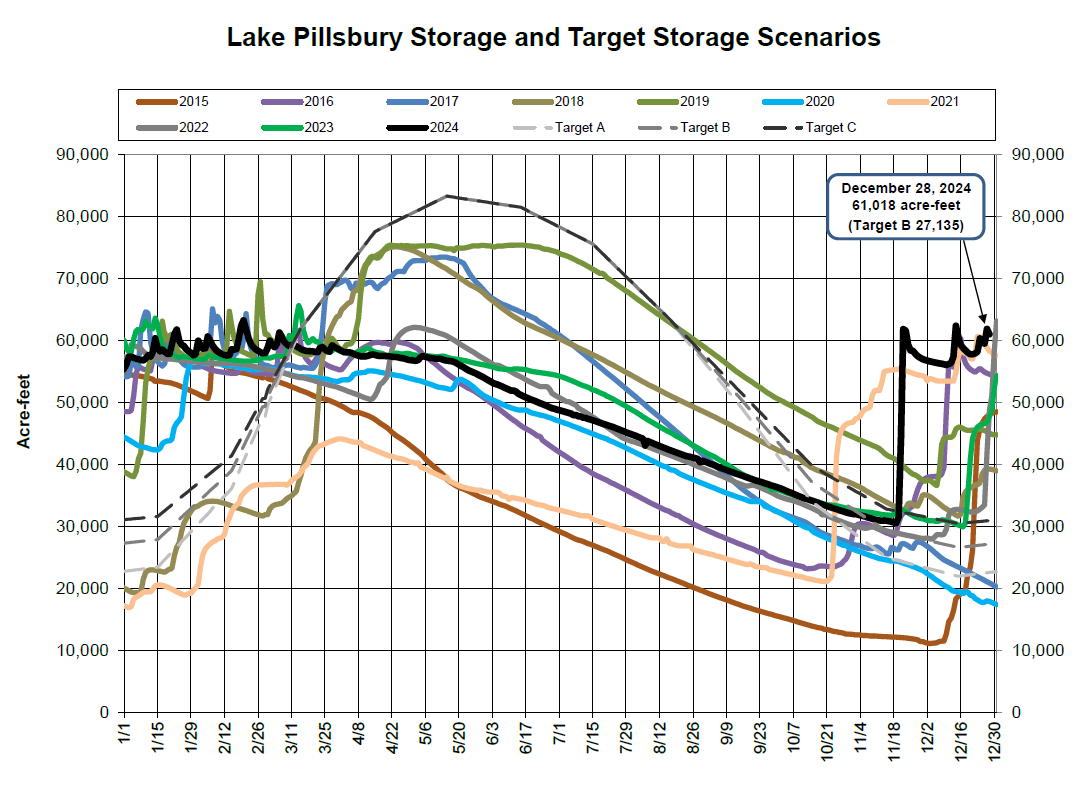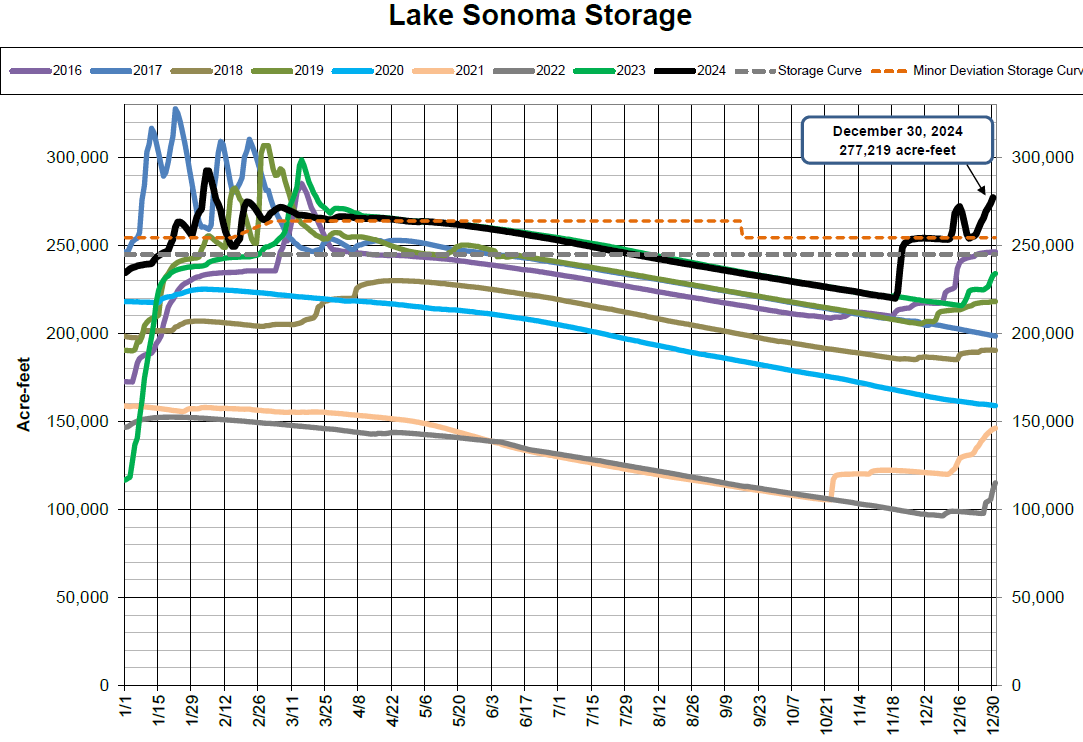Russian River Weekly Update 12/30/24

<Click to view content on website>
Reservoir Storage & Operations:
Water supply information provided by Sonoma Water (find more water storage info here).




$20 Million Available to Advance Habitat Restoration Priorities of Tribes and Underserved Communities
NOAA is announcing the availability of $20 million in funding for projects that will advance the coastal habitat restoration and climate resilience priorities of tribes and underserved communities. This is the third and final round of this funding opportunity, which is available through the Biden-Harris Administration’s Bipartisan Infrastructure Law. View the full Coastal Habitat Restoration and Resilience Grants for Tribes and Underserved Communities funding opportunity
In addition, there are 3 other BIL funding opportunities currently open and information is provided below.
Open Habitat Restoration Funding Opportunities
- Restoring Fish Passage through Barrier Removal Grants (Applications due by February 10, 2025)
- Restoring Tribal Priority Fish Passage through Barrier Removal Grants (Applications due by February 27, 2025)
- Transformational Habitat Restoration and Coastal Resilience Grants (Applications due by April 16, 2025)
- Coastal Habitat Restoration and Resilience Grants for Tribes and Underserved Communities (Applications due by May 12, 2025)
Upcoming Diversion Measurement Qualified Individual Training Course in Davis, CA
The University of California Agriculture and Natural Resources (UCANR) Cooperative Extension service will offer a Water Measurement and Reporting course on January 30, 2025. The training will cover water diversion, monitoring, and reporting, as authorized by Assembly Bill 589. The training class is designed for parties who divert (or are authorized to divert) 100 acre-feet per year or more under the Water Measurement and Reporting Regulation (SB-88) and is open for anyone else who is interested. Diverters who complete this class are recognized as Qualified Individuals for measuring their diversions. The training class is in-person and will not be available online. More information and registration
North Coast Resource Partnership Quarterly Meeting

Two-day climate change event in Sonoma County, Jan. 29 and 30 REGISTRATION NOW OPEN
The North Coast Resource Partnership is hosting a two-day climate change event in Sonoma County on Wednesday and Thursday, Jan. 29 and 30. Sponsored by the Federated Indians of Graton Rancheria, the meetings will focus on team building to solve challenges facing North Coast communities and ecosystems that make up 12% percent of the California landscape. The interactive event will feature presentations and information sharing by elected officials, North Coast Tribes, counties, agencies, non-government organizations, and other partners and interested parties. Participants can register for both days or either day. You can join the NCRP mailing list on its webpage.
Are Climate Models Underestimating Drought?

“…there’s a crucial aspect of drought risk that many models struggle to capture: natural variability from year-to-year and decade-to-decade. This internal variability in the climate system can amplify or counteract human-driven trends, potentially leading to more extreme outcomes than the models suggest.
“The recent California megadrought offers a stark example. Studies suggest climate change made the drought about 40 percent more severe. But natural variability also played a major role in its unprecedented duration. The models didn’t predict a drought of this magnitude and length—it emerged from the combination of the climate change trend and an extended run of naturally dry years.
“The models excel at capturing long-term trends driven by rising greenhouse gasses. But they have a harder time simulating the natural multi-year ebbs and flows of wet and dry periods that occurred even before humans started influencing the planet’s climate. In some cases, they may even underestimate the potential for back-to-back dry years that can accumulate into a megadrought.
“These model limitations matter because the worst impacts often come not from a single dry year, but from droughts that persist for multiple years, depleting reservoirs and groundwater. By focusing primarily on average conditions, we risk missing the most damaging scenarios.”
From Bulletin of the Atomic Scientists: How climate models could be underestimating drought, 12/17/24
In the press:
